Starting a print-on-demand (POD) business in Canada using Shopify isn't much different than if you were to build one anywhere else, except that you need to find POD suppliers that provide quality products and fast shipping to Canadian provinces and territories.
You also want to understand where your customers are located in Canada, seeing as how the landmass of Canada is rather expansive, and some POD suppliers may not dropship to all areas of the country. Regardless, if your goal is to start a POD business in Canada, you have several options to make that a reality.
In this guide, we'll cover everything you need to know about establishing a POD business in Canada, from setting up an online store to syncing it with your POD suppliers, and designing your products to setting the right prices for those items.
Keep reading to understand the ins and outs of the Canadian POD industry, and to make sure you don't make any mistakes along your journey.
How to Start a POD Business in Canada
Launching a POD business in Canada requires two primary building blocks: an online store and a POD supplier. In the following sections, we'll walk you through how to obtain both.
You have several options when it comes to making an ecommerce store. For instance, you could choose from ecommerce platforms like Shopify, BigCommerce, or Squarespace.
We'll use Shopify for this tutorial, considering it's one of the easiest solutions for POD integrations, and we like its pricing, themes, and design features. As for the POD supplier, we have a comprehensive list of print on demand suppliers below, most of which offer apps that integrate in some way with Shopify.
However, our tutorial will primarily focus on Printful, seeing as how they have a Canadian fulfillment center, offer some of the best merchandise design tools, and have product mockups.
Not to mention, Printful doesn't cost anything to use besides the cost of products after you sell them for a profit.
How to Setup a POD Business in Canada
The first step in establishing a POD business in Canada (or even a store in another country that ships to Canadian customers) is to build an online store.
Quite a few ecommerce platforms work well for this, but Shopify serves as a wise choice due to its simple design tools and plentiful integration options.
So, begin by going to the Shopify website and clicking on the Start Free Trial button located on several areas of the homepage.
Walk through the entire setup process. Shopify asks you questions like how many sales you currently have, what you plan on selling, and where you're located.
Much of the setup process is completed to fill in your store settings. This way, you don't have to worry about it in the future.
Shopify offers a 3-day free trial so there's no need to type in any credit card information at the start. You can even establish a link to a POD app like Printful during that free trial.
In short, go through the step-by-step startup wizard until you reach your Shopify dashboard. This is where you'll run the entirety of your POD business in Canada, with menu items for orders, products, analytics, and more.
Next up, you need to choose a print on demand supplier and make an account. We encourage you to explore the list of Print on Demand companies below and make a decision based on your own needs. For this tutorial, we'll go with Printful.
Therefore, you should create a Printful account here. Click on the Start Selling button to begin.
Walk through the steps to configure an account with Printful. It's similar to Shopify's wizard, where they ask for basic contact information and try to get a feel for what type of store you're running.
At the end of that process, you should end up on the Printful dashboard, which provides a solid list of steps for you to follow in completing the setup.
The Printful dashboard also has a quick menu on the left for managing everything from orders to product templates, and billing to the number of business days it takes to ship.
But first, you want to connect Printful with Shopify in order to have all of your products syncing between the two platforms. Printful is a supplier, but it also has an online platform with design tools. Therefore, we want to install the Printful app on Shopify. This integration allows for you to design all of your POD products in Printful and send them to Shopify. There's no need to manually transfer anything; things like pricing, product descriptions, and pictures all get moved from Printful to Shopify.
To activate the integration, go back to the Shopify dashboard. Once there, click on the Apps button.
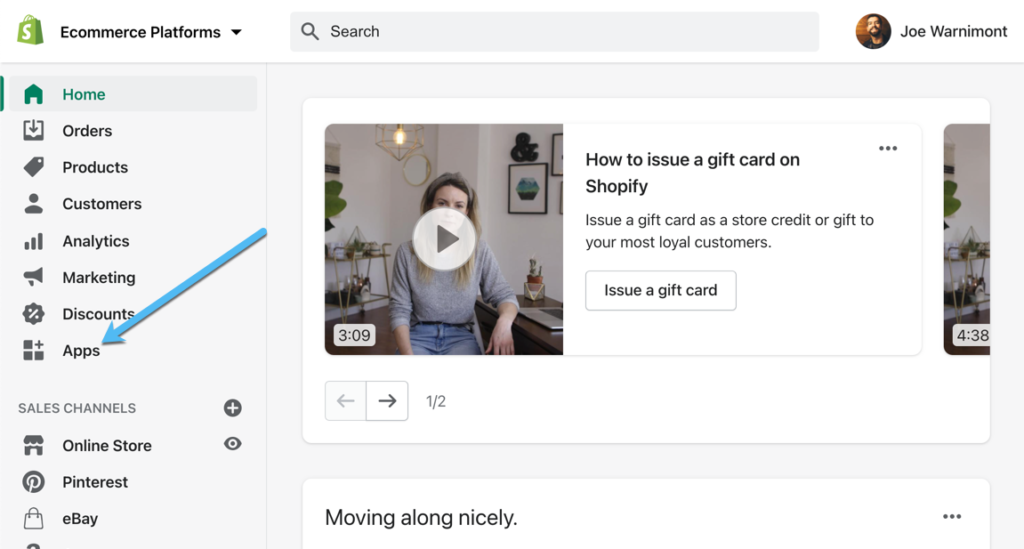
On the Apps page, scroll to the bottom to locate the View More Apps in This Collection button.
You can also directly navigate to the Shopify App Store.
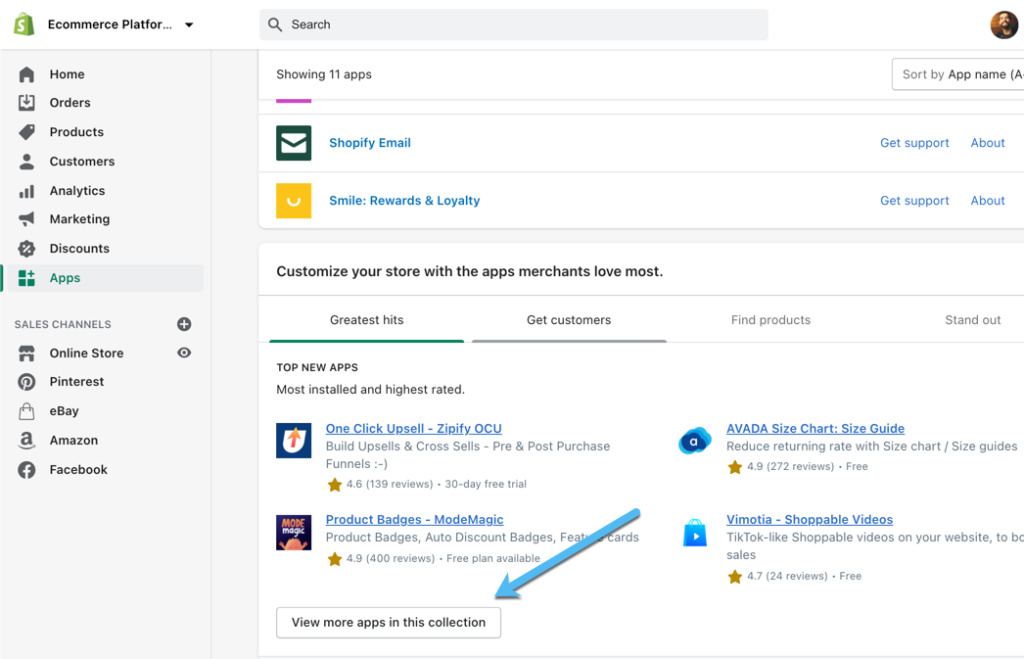
Once in the App Store, feel free to browse around for POD apps. Some of them are outlined in the section below where we talk about our favorite POD suppliers for Canada. You'll find many other options through the Shopify App Store, so consider all of them based on the types of products you want to sell. Just remember, not every POD supplier has fulfillment centers in Canada.
For this tutorial, we're looking for Printful. We already know that Printful has a location in Toronto, Canada and that it provides options for choosing specific products for Canadian customers.
In the search bar, type in “Printful,” then click on the Printful app when it appears.
Click on the Add App button.
As long as you're still logged into your Shopify account it should add the app to your current store. Walk through the prompts to activate the Printful app in Shopify.
Now you'll see the Printful app listed in the collection of Apps on Shopify.
Although all of the web design occurs in Shopify, Printful should be your primary hub for designing POD merchandise, setting shipping rates, and handling billing with the supplier.
Therefore, you should navigate back to Printful to read through the Your Next Steps section. It serves as a wonderful place to completely set up every aspect of Printful that's required to run a POD business in Canada. For instance, you can make product templates, connect your store, order samples, and take care of billing.
We won't go through all of these steps but wanted to let you know that the Your Next Steps section is an excellent place to go back to if you have questions about where your account stands.
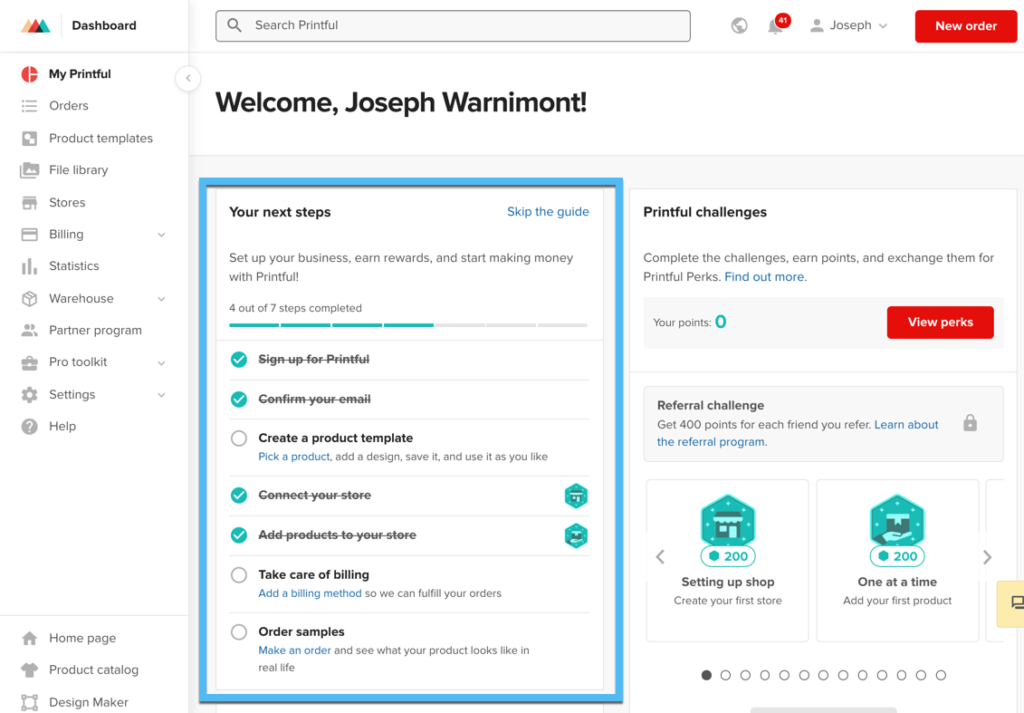
Now it's time to add products.
Print on demand businesses involve choosing products you want to sell, designing graphics to put on those products, and building the product pages so that customers buy the items.
So, most of your work will be handled from the Stores page.
But before that, you'll want to customize a few settings to select the Canada-based warehouse and to specify that you're selling products to Canadians. This way, Printful can present you with the items that are available in the Canadian warehouse.
In the Printful dashboard, click on Settings > Stores.
Scroll to the lower part of the page to find the Selling Region field.
Use the dropdown menu to find and select Canada. It's also possible to use another country if Canada is only part of your customer base.
Note: We also recommend adjusting the Delivery Time Requirements based on what you want for your POD business in Canada. For instance, you can opt for faster delivery but with fewer product options, or you could go with more plentiful product options with slower deliveries. In general, we usually recommend having faster delivery times. You still get a high-quality product selection. Not to mention, POD already takes a few days to process, so most merchants aren't interested in slowing the shipping and handling time any further.
As you can see, the products inside the Printful library now cater to customers in Canada. You only see items available in the Toronto warehouse, and the average delivery times are based on what people should expect in Canada, not other countries like the US.
It's finally the moment you've been waiting for: making your products.
All of this is done in the Printful dashboard.
Find the main menu item for Stores. (This is different than the Settings > Stores option)
Note: You have the option to connect your Shopify store on this page. We already covered the method of linking the two accounts through Shopify, but this one works just as well. In fact, we've found that some setups require you to do both.
Find your desired store and click on the Add Product button.
Note: Your store should show a green Active icon next to its name. Otherwise the syncing won't work. Make sure you have your store completely connected to Shopify prior to making any products.
This reveals the Add Products page, or the catalog of items available for customization through Printful.
The product list is a long one, so take some time to think about which pieces of merchandise might work well for your customers.
Here's a small taste of the Printful collection for your POD business in Canada:
- T-shirts
- Hats
- Kids custom clothing
- Most apparel items like hoodies, leggings, and tank tops
- Bags
- Jewelry
- Socks
- Stickers
- Phone cases
- Drinkware
- Pillows
- Art
- Much more…
For this tutorial, we'll select a simple t-shirt. T-shirts are some of the most popular items to sell online, so it makes sense to at least consider having a few of these in your store.
The next page contains the Printful product designer. It's the same look for all products, but you may see unique features depending on the item and brand you selected. For instance, some t-shirts don't allow you to print on the backs or sleeves, while all brands have different colors. Other products, like canvases and handbags, have entirely different design mockups, considering you're working with completely separate products. Some of them have alternative printing methods as well. Hats, for instance, usually require embroidery instead of direct-to-garment printing.
Anyway, the designer presents you with a mockup generator, several tools for designing the product, and an upload button to add a design from your computer.
Click on that Upload button titled Drop Your Design Here.
Printful offers sample files, but we only recommend using these if you're testing out the features. They're not really meant for selling in your store (or at least you probably wouldn't get many sales).
Therefore, click on the Upload button to either pull a design from your computer or cloud storage service.
We won't go too much into making custom designs in this article. But we do have some suggestions:
- Read this guide to understand how to make the perfect print file.
- Consider hiring a designer who'll make unique designs for your shirts. If you're already a professional designer, great! If not, we recommend getting professional help. There's a slim chance you'll be able to sell your own amateur designs.
- Look into already created designs that could sell well when put onto products. Some sites where you can buy, or get free designs, include PlaceIt (also great for mockups), Vecteezy, ButTshirtDesigns, The Fancy Deal, and Tshirt Factory.
Once uploaded, the design shows up on the mockup product. In this case, the t-shirt is being worn by a mockup model as well. You can adjust the sizing, placement, and dimensions of the image, while also adding text, clipart, and premium images directly through Printful.
Go back to the Product tab to explore the color options for this item. You can choose as many colors as you want, but we often suggest sticking to only a handful of colors, seeing as how it can become complicated trying to manage dozens of product variants. Also, you'll want to figure out which colors combine well with the image you uploaded. Remember, designs with colors that are too close to the background often don't show that well on the garment.
You can also check out the menu above the mockup, which presents several areas where you can print additional designs on the product.
Not all Printful merchandise has extra printing areas. It depends on the brand and type of product. This particular t-shirt allows you to put other designs on the back, outside label, inside label, left sleeve, and right sleeve.
Yet, here's a word of warning. Each extra print increases the printing cost per unit. Placing three or four prints on a t-shirt could very well make the cost more than $30. That's going to be a tough sell to regular customers, and you won't make much of a profit.
So, it's usually best to start with a standard Front print, then maybe consider the Inside Label if you're interested in branding your products.
After all of that is done, and you've established the perfect dimensions for your design, click on the Proceed To Media button.
The Choose Media page generates several product mockups. These are completely free with Printful and, depending on the product, provide lifestyle mockups to show the item in the real world.
As such, you may be able to show a product on a model, or maybe you can choose one that's laying on a couch or in a bedroom. Again, it all depends on the product you have chosen, but in general, there's a multitude of mockups for apparel.
The only downside is that you can't pick multiple mockup styles. So, you either need to go with a lifestyle or regular product photo. There's also no option to include a few pictures with different models. Regardless, it's a wonderful feature that you usually have to pay for elsewhere.
Therefore, highlight the type of product mockup you need for this item and click on the next button to add your product details.
The Add Details page contains fields for filling in the Product Title, Description, Sizing, and more. Printful automatically populates these fields with information from the manufacturer. Although it's an excellent idea to pull from these default descriptions, you should use them as inspiration for your own product pages. We recommend leaving the manufacturer defaults in Printful and editing them once you get into Shopify. That way, you're able to customize to match the voice of your brand, while also optimizing for the search engines.
Therefore, customize the fields however you see fit.
One interesting option is for the Size Guide Measurement System.
Canada has had a back-and-forth relationship with the metric system. It's used for some measurements but not for others. In short, both the metric and imperial measurement systems are found in parts of Canada. Due to that, it's a wise decision to include both of them with your sizing guides, or at least when you're selling to Canadian customers.
Make sure you scroll down on this page to explore several other settings. These all get transferred over to your Shopify page, so it's important to fill them in prior to that syncing process. Add tags to organize your products, include the item in any product collections you have configured, and think about showing a Free Shipping label if you plan on offering that to Canadian buyers.
Also, make sure the Publish Product box is checked unless you'd rather continue working on the product in Printful and share it to Shopify later.
The last step on this page is to click on the Proceed To Pricing button.
The Pricing page features an incredibly fun tool for seeing the cost of your item, setting the retail price, and analyzing your profits based on those numbers.
It's the first time you get an idea of how much money you're going to make with your products. Just remember to complete your research about what people are willing to pay for particular products. It's not a good idea to assume that you can sell a t-shirt for $40. That might fly for some designer brands, but Printful only stocks the most common t-shirt brands, nothing crazy.
Luckily, Printful actually gives you suggestions for retail pricing in the calculator. It's a range of pricing based on data Printful has pulled from its own users.
So, type in your numbers in the Retail Price fields. You can make larger products a little more expensive to account for the extra material costs. Then, look to see if the Profit on the right side is enough to cover all your other costs like for marketing and web design.
What's nice about the calculator here is that you can generate automated profit margins by increasing the cost by a certain percentage or dollar amount.
After you've set your pricing, you're ready to send the POD item to your Shopify store.
Click on the Submit To Store button to finish up.
Printful sends you back to the Store page, where it shows a list of all products added to Printful and synced with the Shopify platform.
You should see the Printful sync working its magic for a few moments, after which it provides buttons to Edit and View the product on your store.
With that all done, go to the Shopify dashboard and click on the Products tab.
If you already have products in your store, scroll through the list to find the new ones from Printful. If the store was previously empty, you should already see the Printful item at the top of the list.
Click on that product to open its Product page in the backend of Shopify.
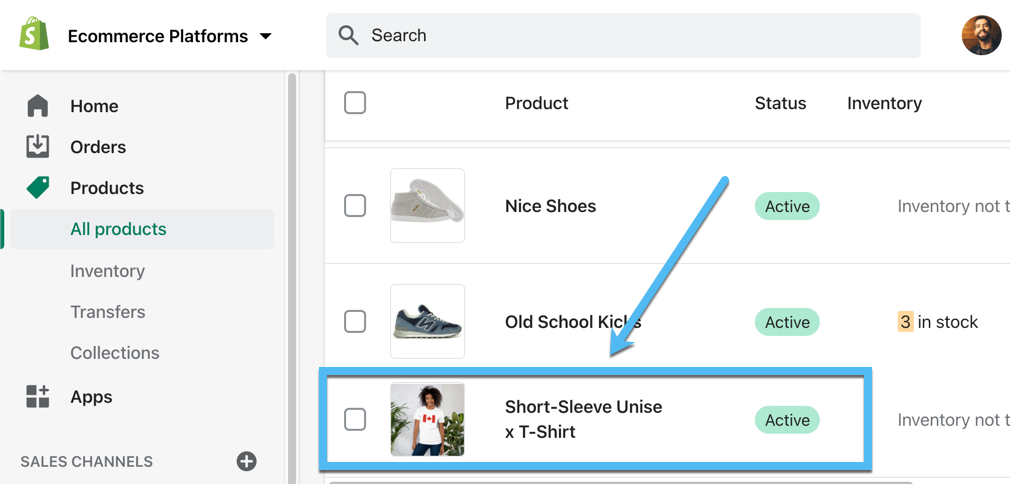
We already saw an area to edit the product details in Printful, but this is the more concrete version since it's the actual product page on your website. Therefore, you can always come back to this page to modify elements like the Title, Description, Images, and Price.
You'll also find a wide range of other settings for things like sales channels, product types, and shipping.
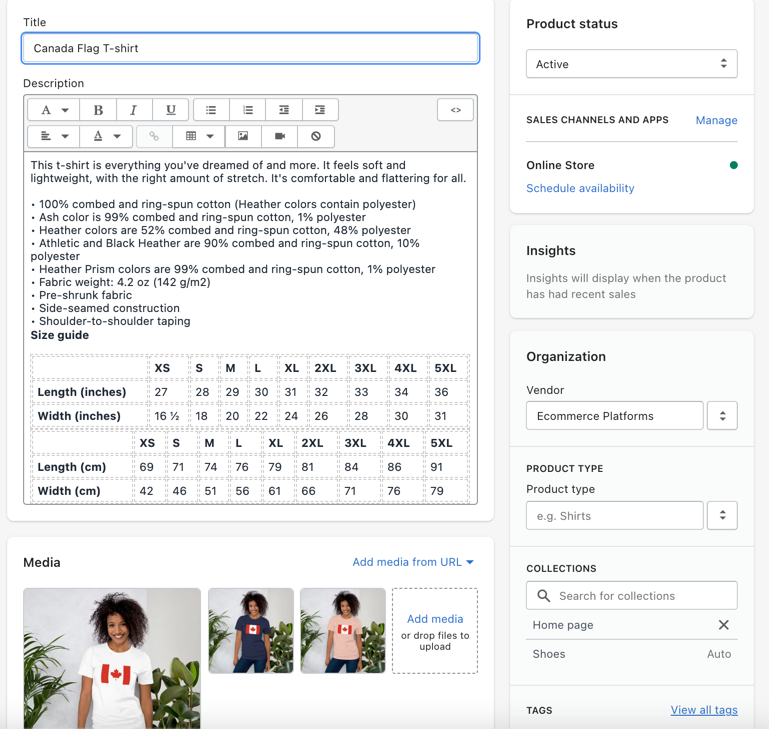
Shopify offers so many ways to customize your store, so we won't be able to get to all of those features in this article. If you'd like the easiest guide, jump back to the Home page to utilize the step-by-step tutorial on configuring your Shopify store.
However, you must at least start by choosing a Shopify theme.
Therefore, jump to the Themes page found by going to Sales Channels > Online Store > Themes.
Move to the bottom of the page to either search for Free Themes or open the Shopify Theme Store.
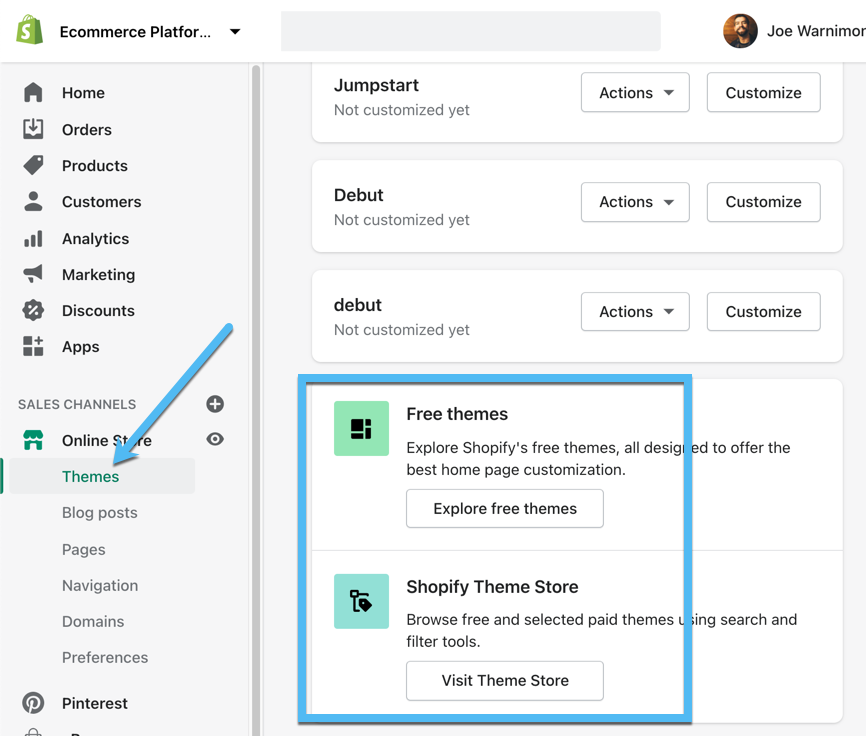
Pick a theme that's suitable for the products you're trying to sell.
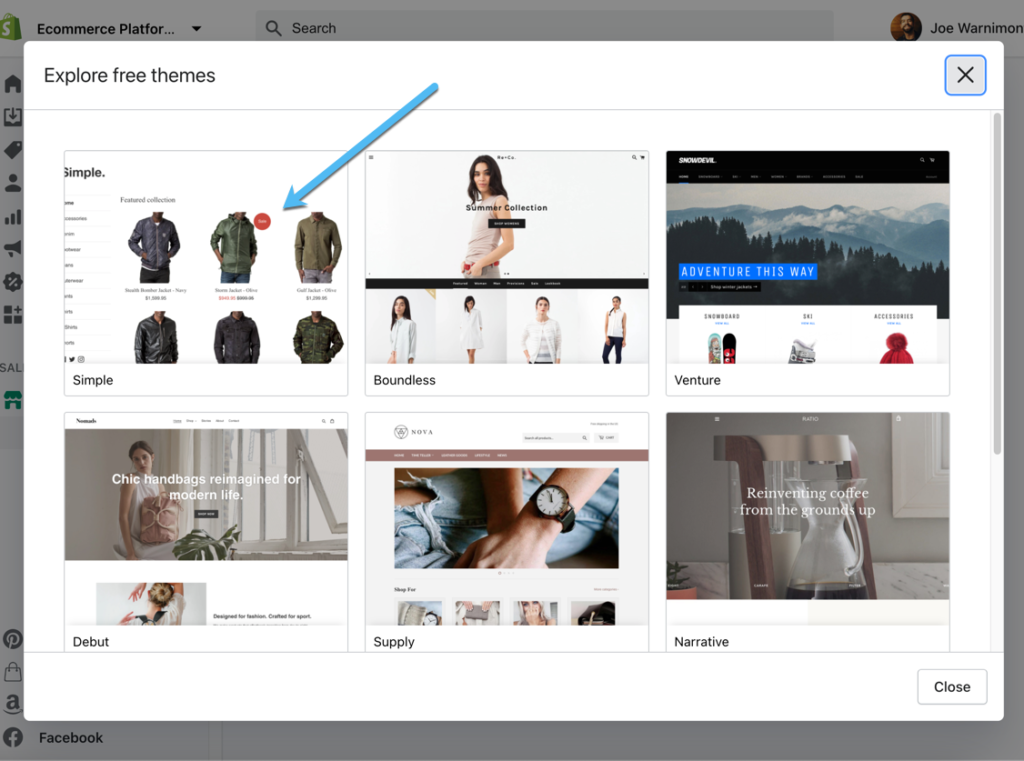
Adding a theme to your Shopify store doesn't actually make it go live.
However, it does place it in your backend theme library. Locate the theme in that list and click on the Actions button. Choose the Publish option to make this theme the primary design on your site.
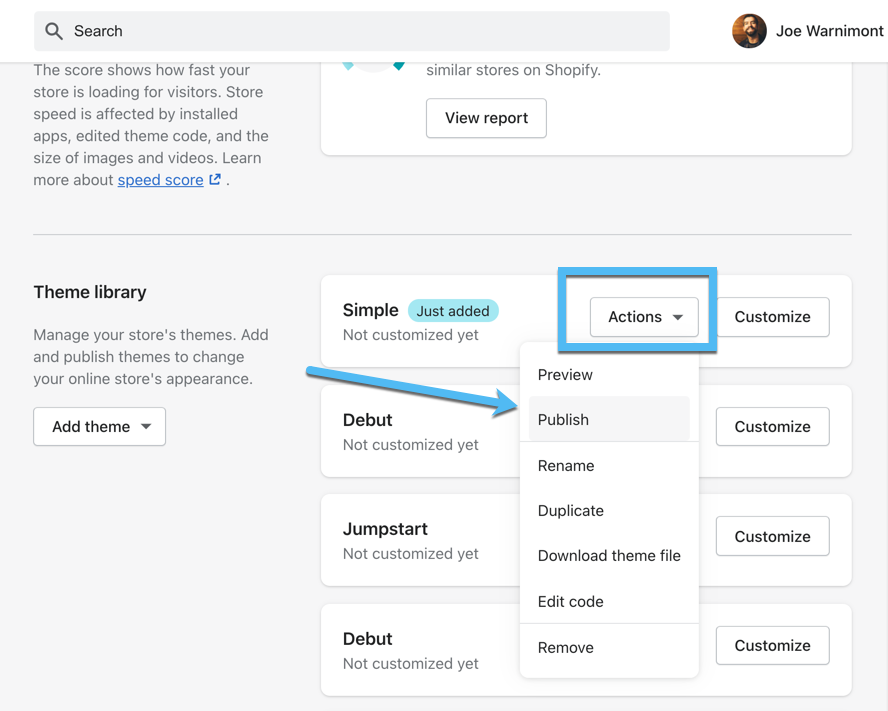
But what does that theme look like?
You can make changes to the design, view what it looks like, and upload a logo by clicking on the Customize button.

In the Shopify Customizer, you can scroll through the sidebar menu to change things like the logo, colors, and section formatting. You'll also want to add your products to the right homepage collection so that they show up on the front page of your website. We already did this for our demo website, so we can see that Canada Flag t-shirt on the homepage.
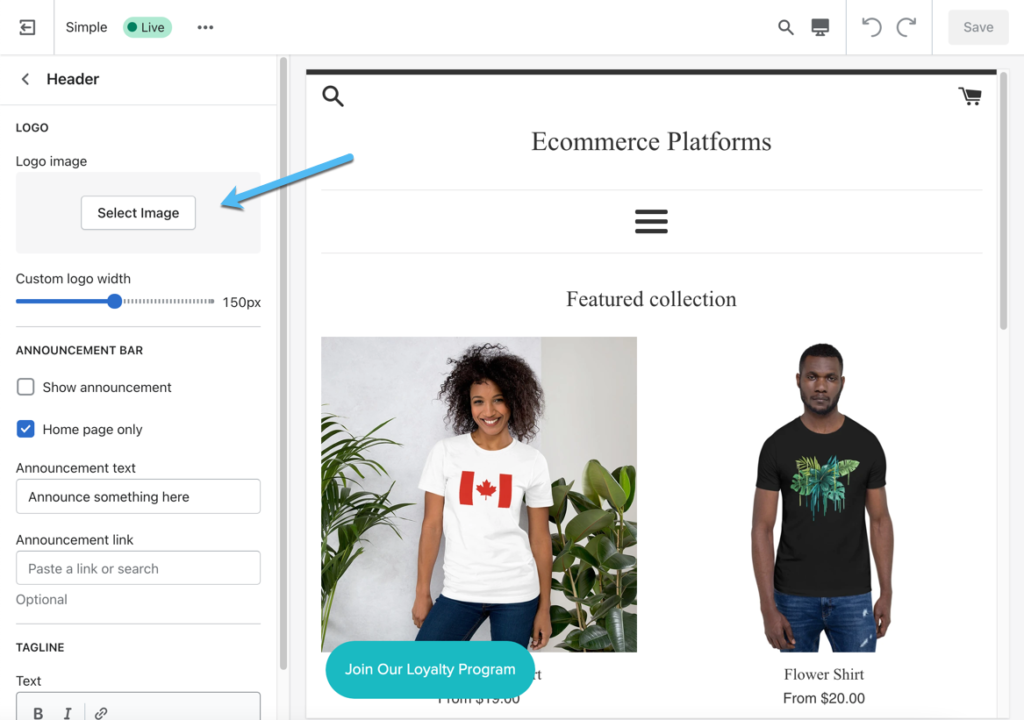
Shopify provides a way to view the product page in the customizer or by viewing the actual website.
Be sure to check if all of the desired information appears on the product page before selling it to customers. You should also walk through the checkout process to ensure it works, and to see what customers have to go through in order to purchase a product. Maybe it's too long, or maybe you could cut down on the fields required to make an account. You never know until you test the checkout.
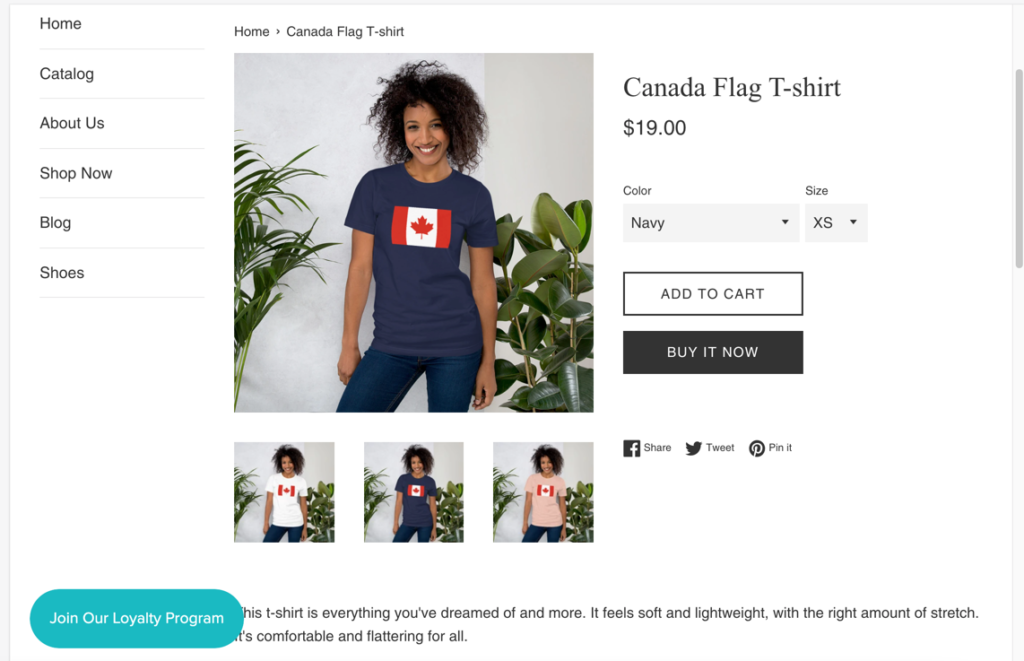
As mentioned, this is simply a small portion of what you can customize on your Shopify website. In addition, you'll want to add a domain, activate a payment processor, and consider marketing tools, like an email newsletter.
To design your entire website, go back to the Home page in Shopify and go through the checkboxes. These guide you through everything you need to make a fully functional online store on Shopify.
What Happens After That?
We're glad you asked!
Customers will eventually start visiting your online shop. After that, they'll put products in their carts and purchase what they want. You receive a sale notification, and the payment processor collects money from your customer, eventually placing it into your merchant bank account.
What's more, is that the sync between Shopify and Printful sends a notification to Printful to start printing and fulfilling the item. That's where the whole “on-demand” part of your print on demand business goes into action.
Based on your settings, Printful picks the right product, prints your design on it, then packages the item, and ships it using the chosen delivery method.
You can also manage fulfillment details like returns, packaging inserts, and billing from the Printful dashboard.
Essential Tips for Building Your POD Business in Canada
Custom print on demand selling comes with its pros and cons. Just like any online business, you're bound to encounter roadblocks. But we're here to make sure you at least minimize any problems you have along the way. Use our tips below to build the best possible POD business in Canada.
- Only go with a POD supplier that has a substantial presence in Canada. Do they own warehouses and fulfillment centers in Canada? That's a good start. You're also looking for reasonable shipping options that get products to Canadian customers as fast as possible. For instance, FedEx, UPS, and Canada Post are all winners when selling in Canada.
- Consider local customs, traditions, and languages. If you're from Canada, you might not need to worry much about this point. We're more worried about people outside of the country who may not be as well-versed with Canadian customs, especially lesser-known regional ones. So, do your research before committing to any product design, or before sending out an email that assumes everyone in Canada speaks French (or English for that matter). No, Canada isn't always cold. No, Canadians don't exclusively live in the woods; there are plenty of cities. And you may want to brush up on colloquialisms. Did you know that bathrooms are usually called washrooms in Canada? Or that another word for beanie is “tuque” in some regions?
- Think about shipping and tax implications when selling in Canada. All provinces have their own sales taxes, and shipping from a different country brings up an entirely new set of logistics and fees. That's why it's suggested you maintain a partnership with a supplier with locations in Canada.
- Offer lifestyle product mockups to get more sales. This is more of a tip for all POD stores, but the idea is to complement your regular product photos with lifestyle pictures, like of a model wearing your shirt in a cafe, or a custom-designed handbag sitting on a couch. These lifestyle photos help customers see the item in action, allowing people to visualize what it looks like in their own lives.
- Be sure to order samples from all print on demand services. It's so easy to look at your design online and assume it's going to work out okay when sent to customers. After all, why not save money by skipping the samples? Unfortunately, this is one of the first big mistakes you can make as a POD seller. You must order samples to check the quality of your products (does your supplier use thin, junky t-shirts?), make your prints look good on the products (changes in color due to the garment shade, improper alignment, poor printing to begin with…), and to see what the packaging is like. How long do the products take to get to your home? Is there branding on the package? What about information to make a return?
- Test product sales, then put a focus on the ones that sell the best. A big part of the print on demand business is testing to see what works. Don't expect to see incredible sales on your first item, or second, or tenth. It's great if you do, but it's more likely to struggle a bit, ask for feedback from customers, and later establish what people are willing to buy.
- Tap into tried-and-true marketing techniques. Luckily, most of the best marketing techniques can be handles through Shopify. We're talking email marketing, abandoned cart recovery, social media marketing, and social ads.
Top POD Suppliers in Canada
The guide from above about making a POD business in Canada mainly talks about Printful as the POD supplier. Printful serves as a reputable brand with a direct integration to Shopify. It also has a Toronto warehouse, which services the vast majority of Canada with fast shipping. However, you may want to opt for another POD company depending on your product needs, the different pricing from each one, or because you find a particular feature from one that makes your workflow much easier.
However, the internet is filled with POD companies, some of which lack Canadian warehouses, while others aren't as high of quality in terms of their products. Due to the sheer numbers in the POD game, we researched and found the best POD suppliers for running a business in Canada.
1. Printful
Printful has a place in our hearts for a few reasons. First of all, the company is known for providing high-quality products from a wide range of apparel suppliers. The brand also owns its entire printing and distribution network, giving them more quality control over alternatives like Printify. Furthermore, you're bound to love the design tools, pricing controls, and syncing abilities that come with the Printful dashboard and app.
Oh yeah, and Printful has a distribution center in Toronto.
Pricing 💰
Free.
There is a Pro plan for $49 per month, which gets you several other features like a custom mockup maker, promo maker, and keyword scout.
You only pay the cost of each item after you make a sale. They also have a few other paid services like asset design, warehouse storage, and branding.
Pros 👍
- You can ship to places all over the world using Printful's network of warehouses in Canada, the US, and Europe.
- Choose from a wide range of products for your POD business in Canada, including t-shirts, sweaters, bean bag chairs, socks, and hats.
- Offer personalization for your custom products where customers can type in their own bits of text and have them printed on the items.
- Choose where to store your products, and utilize a feature for switching to other products if your exact item isn't in stock.
- Design all of your products in the Printful dashboard by uploading images, adding text, and customizing product page details like pricing, descriptions, and tags.
- Sync your products back and forth with Shopify.
- Consider custom product inserts.
- Link to other sales channels like Etsy and eBay.
Cons 👎
- Toronto is the only fulfillment center. Some of the competition has more locations in Canada.
- Toronto isn't exactly centrally located, so the Northern Canadian customers may see extended shipping times.
- We would like to see it made possible to utilize as many product mockups as you want. Right now, you're forced to choose one and stick with it.
- You may be able to find similar products that are slightly cheaper from other POD companies.
2. Printify
Printify is the closest competitor to Printful. It's known for having a wider product selection than Printful, along with consistently cheaper prices. However, Printful typically provides stronger quality control since it owns its warehouses. Printify, on the other hand, runs a network of warehouses managed and owned by other companies.
Having said that, Printify is still a wonderful option, with its collection of over 300 products, direct integration with most major ecommerce platforms, and a beautiful product designer for uploading your creations.
Printify offers a handful of print provider partners with locations in Canada. You can also ship to Canada from its printers in the US as an alternative.
As of this article, Printify has three Canadian printing partners, all of which focus on apparel. Some products from these suppliers include shirts, sweaters, baby clothing, tanks, long sleeve t-shirts, and hoodies.
Pricing 💰
Printify has two main pricing plans: Free and Premium.
The Free plan gets you 5 stores and unlimited product designs. It's very similar to the setup with Printful. The Premium plan expands your account to 10 stores, and you unlock up to 20% off in discounts on all products.
You can also sign up for a customized enterprise plan through Printify.
Pros 👍
- It's one of the more cost-friendly POD printers you can find.
- You can sign up for a relatively inexpensive premium plan to cut your product costs.
- The larger network of suppliers means you get more products to choose from at cheaper prices.
- Printful offers a wonderful online design tool.
- You also get some mockups to use as product images.
- Printify connects to popular ecommerce platforms like Shopify, Bigcommerce, WooCommerce, and Wix.
- You can sell on marketplaces like eBay, Etsy, and Amazon.
Cons 👎
- User reviews often report Printify's quality to not be as consistent due to its larger network of partner printers.
- The mockups aren't nearly as good as what you get from Printful. You also don't receive many lifestyle photos.
- The Canadian printers are limited to apparel products.
3. Spreadshirt
Spreadshirt is unique in that you're able to design your own products and either sell them through the Spreadshirt marketplace or offer them on your website. The print on demand version of Spreadshirt is called SPOD, and it has a Shopify app for linking to your store. Therefore, you would install the SPOD app instead of going directly through the Spreadshirt website.
The SPOD supplier offers 48-hour print on demand turnaround times, and you can ship to places like Canada, the US, and Europe by using its network of warehouses and distribution facilities. The app provides a beautiful merchandise designer online, along with a library of free designs to make your own products. All orders are managed on the Shopify dashboards. You can see metrics for your sales, automatically fulfill orders as they come in, and change settings for product pricing.
Some products include pillows, shirts, hoodies, handbags, mugs, and aprons.
Pricing 💰
There's no fee to sign up for SPOD/Spreadshirt. You only pay the company when an order is placed and it gets fulfilled. You'll also have to factor in shipping fees.
Pros 👍
- Spreadshirt has a specific branch of its company for print on demand selling. Named SPOD, the app utilizes the many Spreadshirt warehouses, while also giving you access to its printable products.
- You can integrate with top ecommerce platforms like Shopify, WooCommerce, and Magento. There's also a SPOD API for completing custom integrations.
- The Order Desk integration lets you manage and sell POD products through marketplaces like eBay, Amazon, and Etsy.
- The apparel lines offer dozens of color variants; it seems like far more than the competition.
- The product selection holds up next to the big dogs like Printful, offering options like aprons, phone cases, stickers, buttons, and all sorts of apparel and accessories.
- You can offer personalized products by adding a Customize button on your product pages.
- Sample orders are available for up to 20% off.
Cons 👎
- The warehouses aren't actually in Canada. However, Spreadshirt uses FedEx and UPS to quickly ship products to Canada from the US.
- The online design tool isn't quite as robust as the one from Printful.
- User reviews online have some concerns about the quality control from Spreadshirt.
4. Redbubble
Redbubble functions much like Spreadshirt in that any artist can come to the site, design a product, then sell it on the Redbubble marketplace. In addition, you can opt for a print on demand process where each product you sell gets printed and sent out individually.
Redbubble is a little different in that it doesn't integrate with ecommerce platforms. Therefore, you build a complete store through the Redbubble platform and use that as your website. You can, however, showcase a portfolio of your products on a third-party website. This setup has its pros and cons: It's advantageous in that even beginners can quickly make a site on Redbubble, yet you're stuck working through that platform instead of your own website.
Having said that, we're impressed by the large selection of products, from phone cases to wall art, and stationery to baby clothes. Redbubble is also known for sticking with high-quality raw products, making them desirable for printing.
Another benefit is that many of the printers and suppliers are located in Canada.
Pricing 💰
Similar to just about every POD supplier, Redbubble doesn't take a subscription or monthly fee. You simply set up your profit margin based on the item's cost, and pay Redbubble when orders come through. You'll also have to factor in shipping fees.
Pros 👍
- Redbubble offers a simple website designer, as well as access to its large following of buyers. This makes it easier for you to sell since you don't have to market your products as much.
- You can choose products that ship from Canada. There are quite a few products stored in the Canadian warehouses such as posters, hoodies, stickers, spiral notebooks, and water bottles.
- The overall product selection stands out, with the usual apparel items and some more unusual products like makeup bags, scarves, tech accessories, and coasters.
- The online design tools make it easy to upload your products.
- You can actually ship all around the world with fast speeds. It's not only reserved for Canada and the US.
- All of your designs are protected by anti-piracy and watermark features.
Cons 👎
- There's no way to integrate Redbubble with an ecommerce platform like Shopify. That's not entirely a bad thing (only selling on Redbubble that is), but we'd rather have some options to control your own website and brand.
- Not all products are stored and shipped from Canada. Although the selection is strong, you may have to make some sacrifices.
5. Printeez
The Printeez POD company is located in Canada; its products get printed in Quebec. We definitely like this from a Canadian POD perspective, but it's worth mentioning that you can also ship its products anywhere else in the world.
As a custom apparel POD supplier, Printeez works by letting you integrate with an ecommerce platform, design your products, then only pay when you make a sale. There are no minimums, along with free shipping for many customers.
That free shipping mention is a huge one, considering most POD suppliers have nothing like that. In fact, even Printful can get a little expensive when you start looking at the shipping fees for larger, unique items.
Overall, Printeez looks like a winner based on its intuitive design portal, its location, and its several different decoration methods like screen printing, digital printing, and embroidery. The product selection isn't the greatest, but it's respectable for those only selling apparel.
Pricing 💰
Printeez is completely free to sign up and run a store, design products, and use its online tools. The only time you make a payment to Printeez is when a customer purchases one of your items. Printeez then prints your design on the product and bills you the cost of the item.
Pros 👍
- Printeez does its best to provide free shipping to most of its customers.
- Everything from Printeez caters to Canadian sellers. You can see pricing in CAD, offer the best shipping to Canadian customers, and even speak with customer support reps in Canada.
- Printeez offers rather high-quality apparel brands such as Coal Harbour, ATC, and Next Level.
- The color options are plentiful for most apparel items.
- You can quickly check the cost of each item and set a profit margin using Printeez's useful pricing tools.
Cons 👎
- Printeez offers some loose integrations with ecommerce platforms, but most of these are done by tapping into APIs. There don't seem to be any simpler apps.
- You have limited options when it comes to items outside of the apparel category. Handbags are the only items that aren't shirts, tanks, and sweatshirts.
- The prices appear higher across the board when compared to the competition. However, Printeez does stick with reputable, premium-quality apparel.
6. Teehatch
Teehatch is a dropshipper and POD supplier of hats and shirts in Canada. All production and distribution happens in Vancouver, allowing you to maintain a level of commitment to shipping speeds for customers. You also have the opportunity to speak with Canadian customer support reps who're familiar with the market and ready to help you along the way.
Yet remember, Teehatch is only for t-shirts and hats, so you should only go with the POD company if that's what you're selling. There are some extra products like bags, aprons, and facemasks, but they clearly focus more on shirts and hats.
Other than that, Teehatch works just like you would expect for a POD company. You integrate with a platform like Shopify, start making your products with the online designer, and automatically send orders to be fulfilled to Teehatch.
Pricing 💰
Teehatch doesn't cost anything until you sell products. You mark your profit margins and only pay the base cost when a product sells.
Pros 👍
- Teehatch is based in Vancouver with a Canadian customer support team, a Canadian fulfillment center, and even pricing that's listed in CAD.
- They primarily focus on shirts, sweatshirts, and hats, so those products are of the highest quality.
- You can integrate with platforms like WooCommerce and Shopify. It even has an integration with Etsy.
- Choose between print types like vinyl, digital printing, and embroidery.
- The pricing is reasonable across the board.
- The online designer may seem too basic for some sellers, but it's extremely easy to use.
Cons 👎
- You're limited to apparel products, with only a few alternative items like aprons and bags.
- You have to pay more in shipping fees to receive a tracking number.
- Each extra item per order requires an additional shipping fee.
Our Conclusion on Making a POD Business in Canada
Are you ready to get started? With the tutorial above, and our list of the best POD suppliers, you're equipped with the knowledge and tools to begin your very own POD business in Canada.
We recommend trying out Printful and Shopify to begin with, but also venture out towards other dropshipping or POD companies that are willing to work with you in Canada. Overall, the main benefits to look for when selling in Canada is that the supplier actually owns a warehouse in Canada, they sell quality products, and they can sync your products with an ecommerce platform like Shopify.
Good luck, and let us know in the comments below if you have any questions about building your POD business in Canada, or just general questions on how to make money with print on demand services.

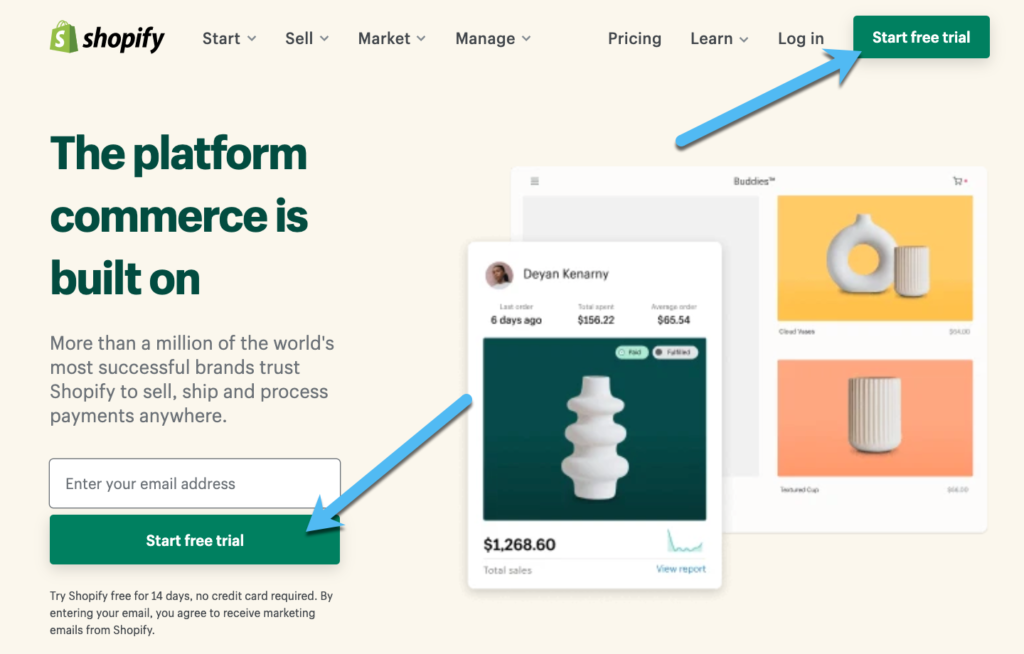
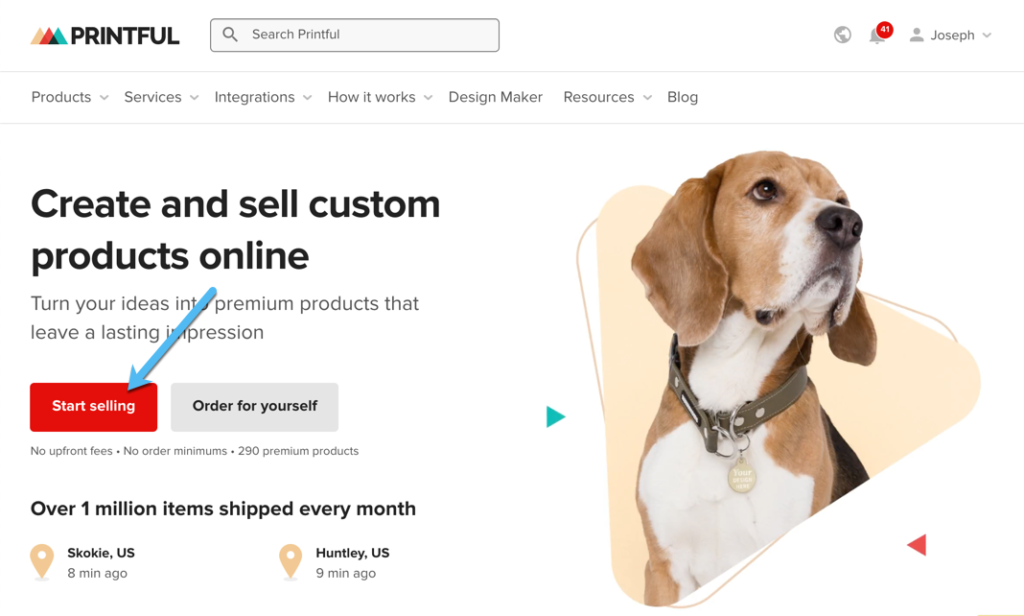
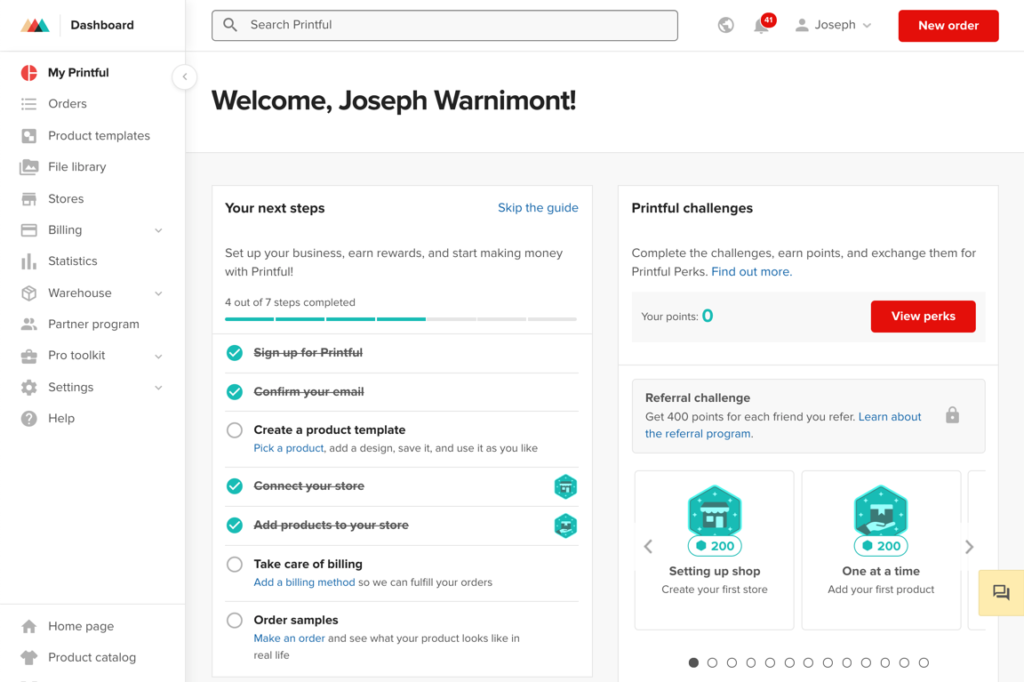

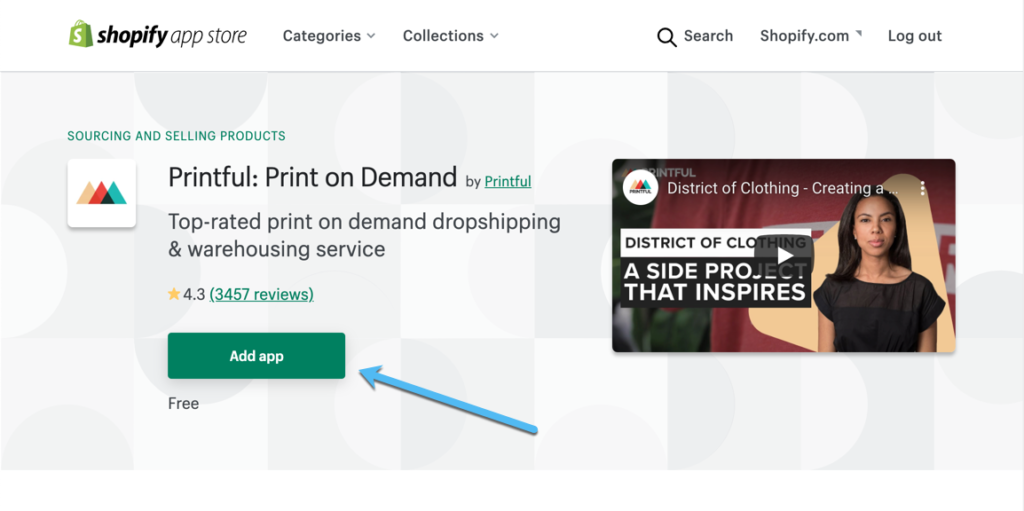
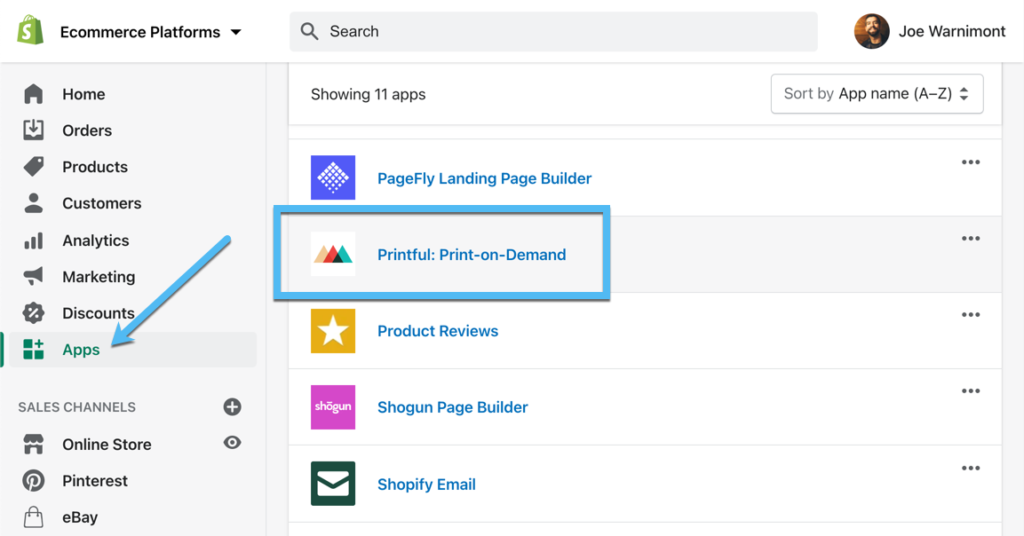


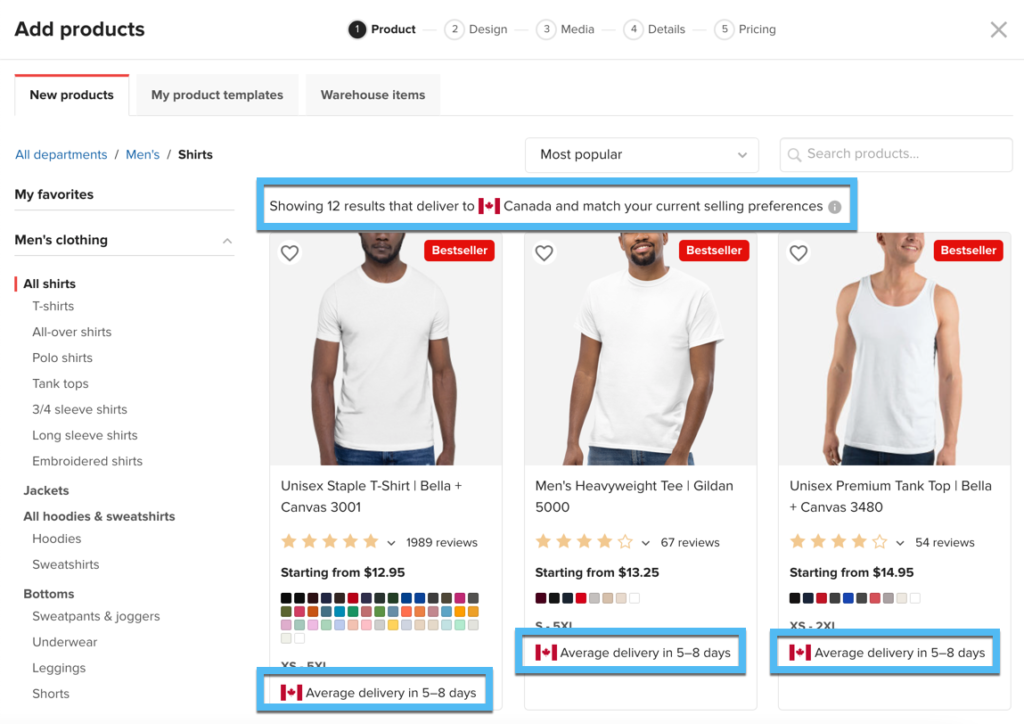
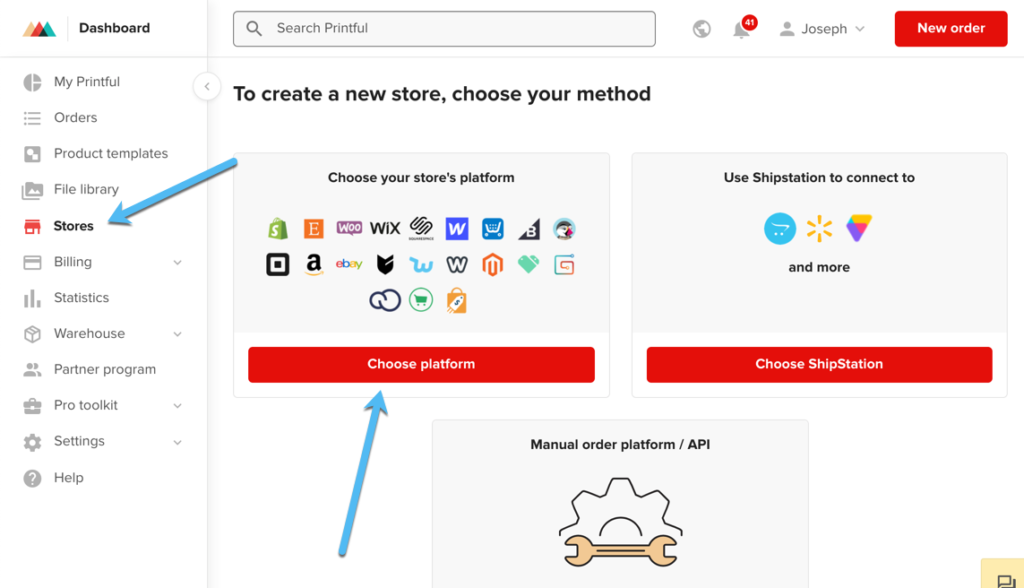
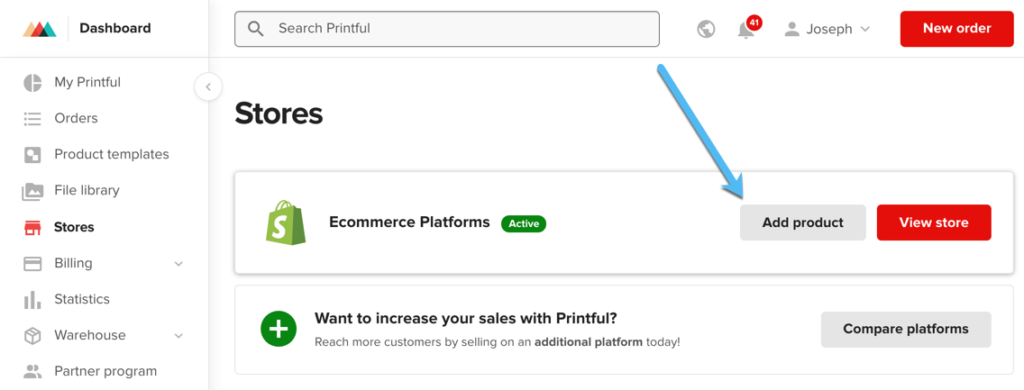

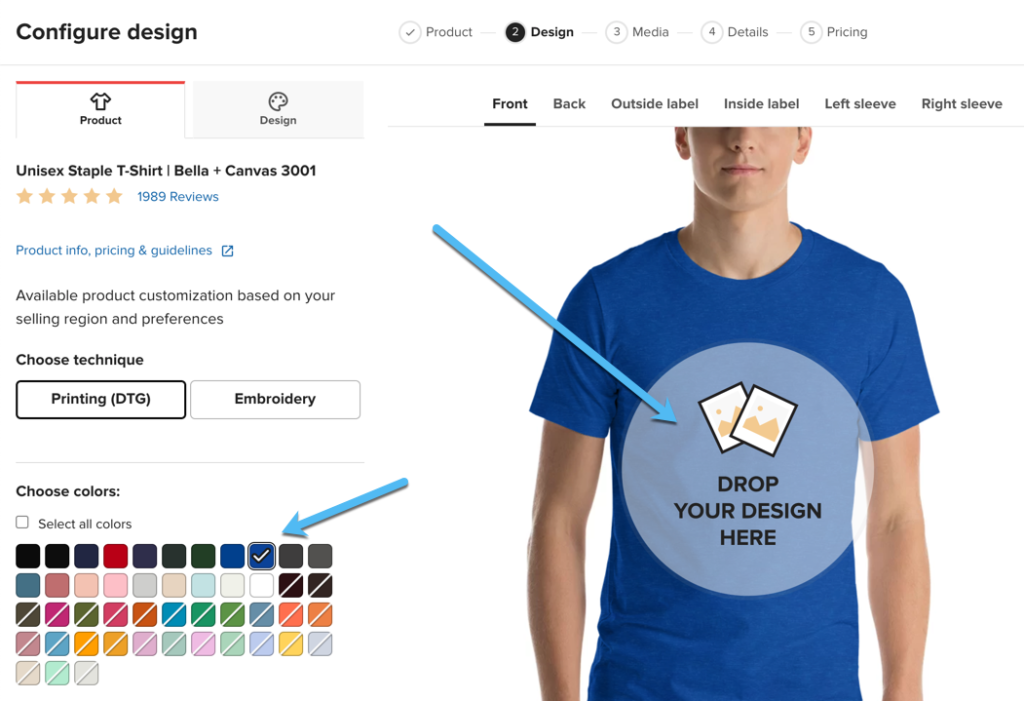
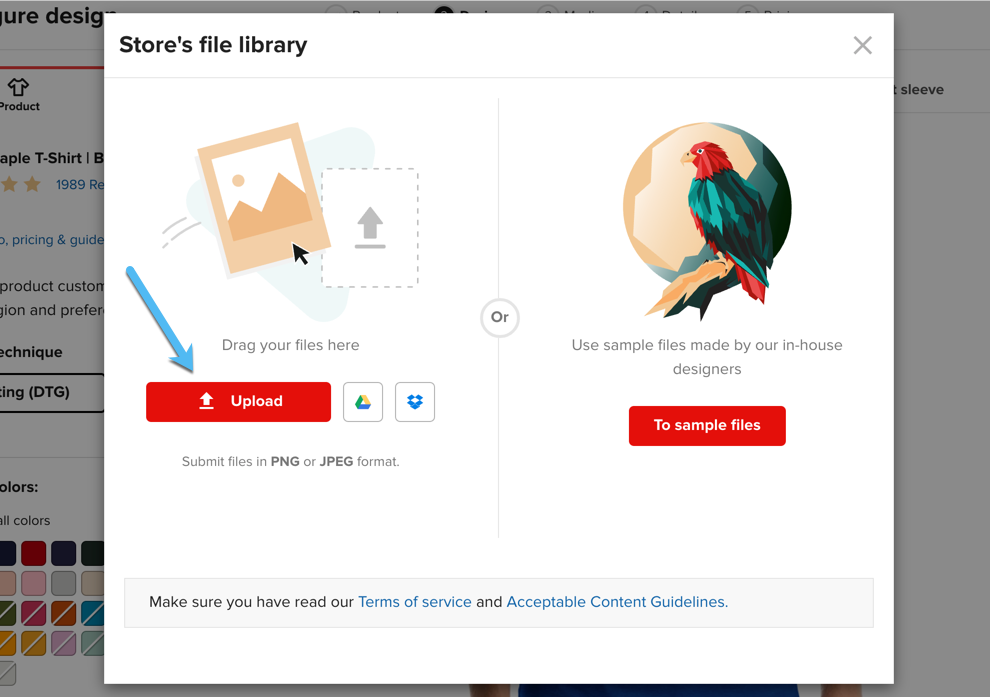
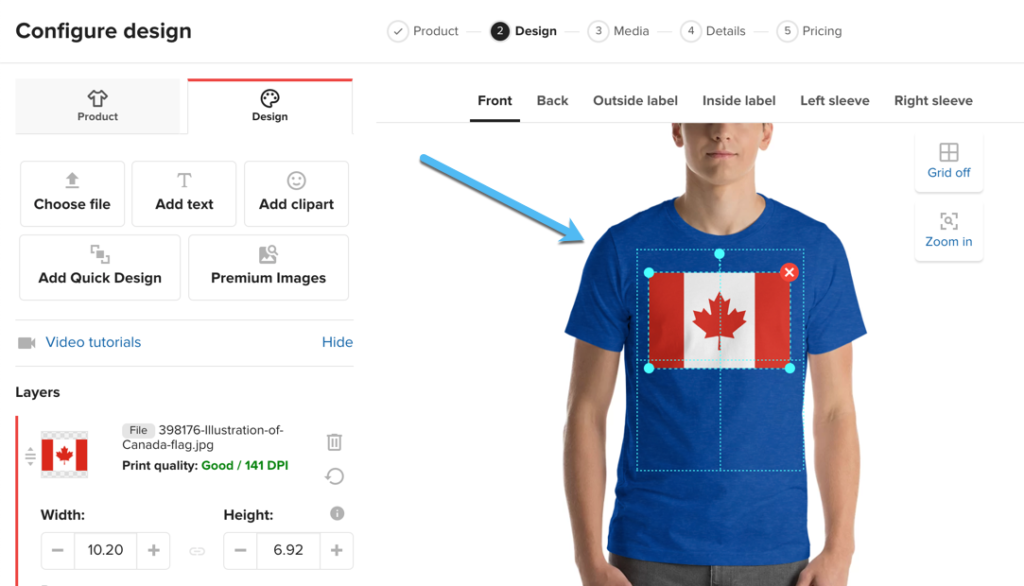

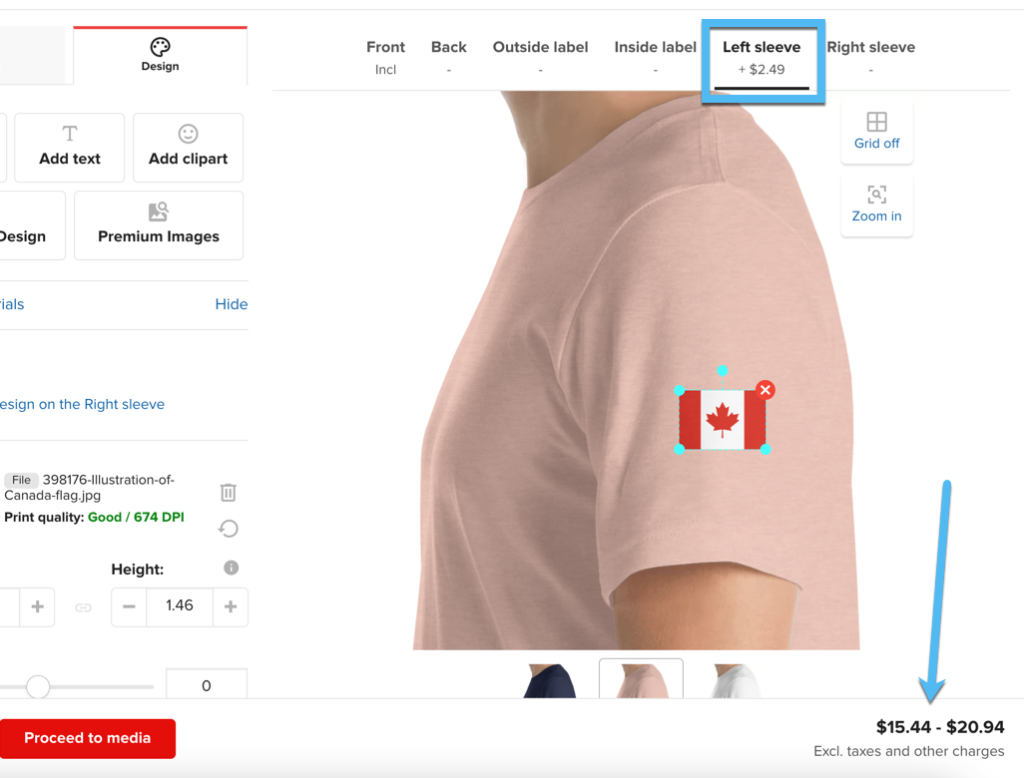
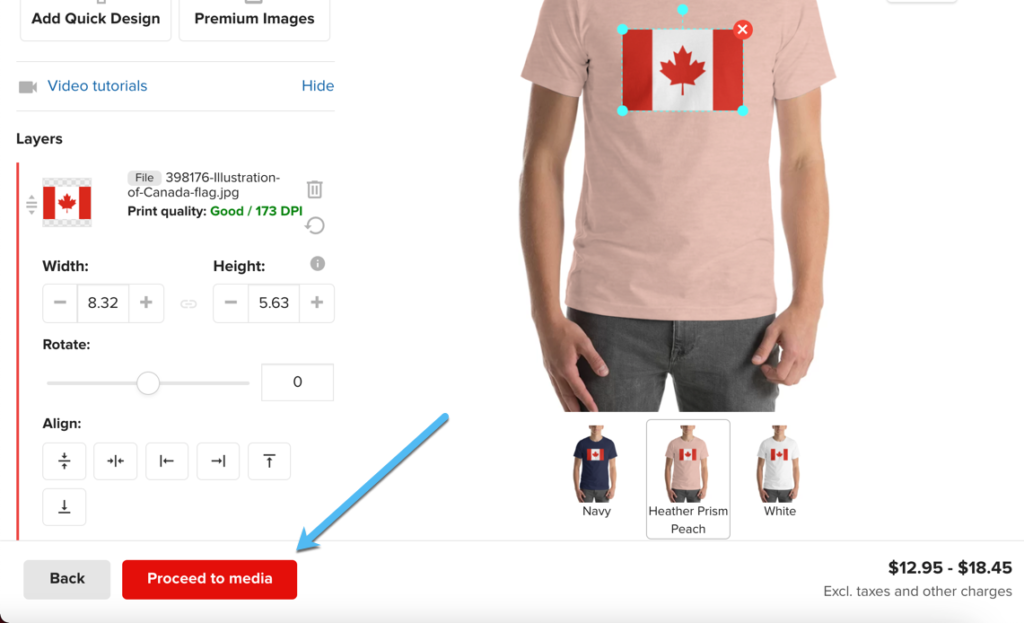
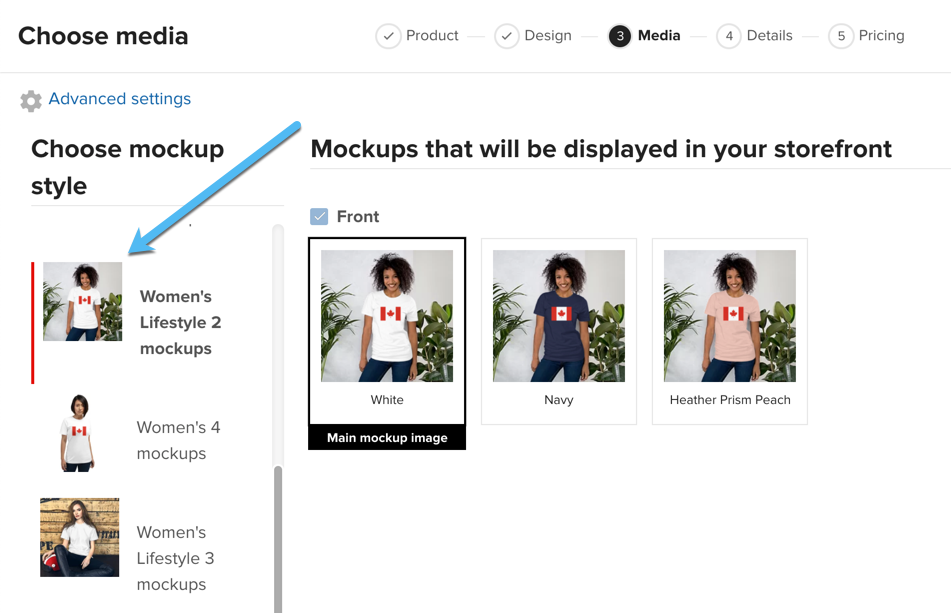
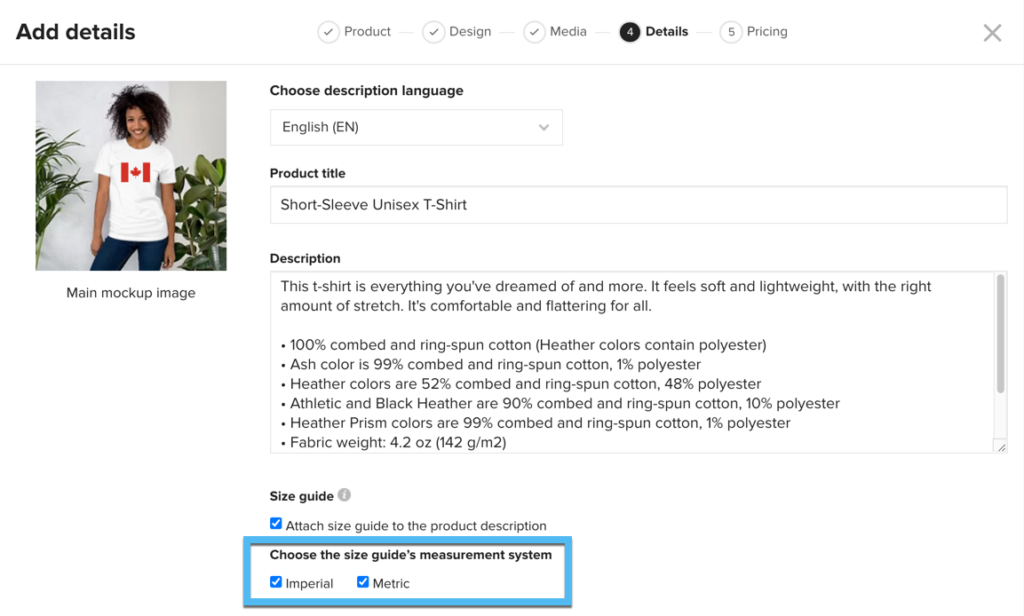
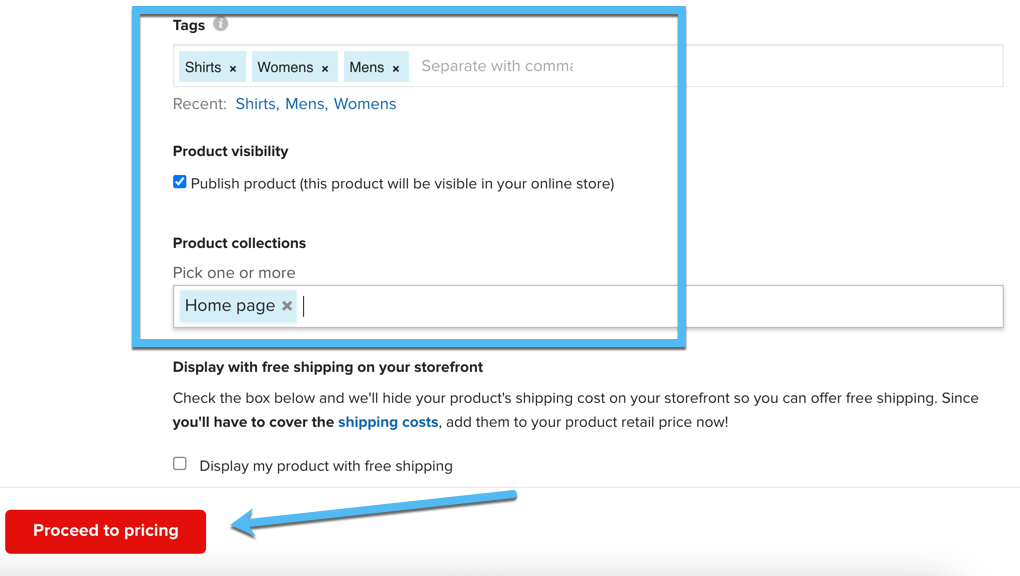
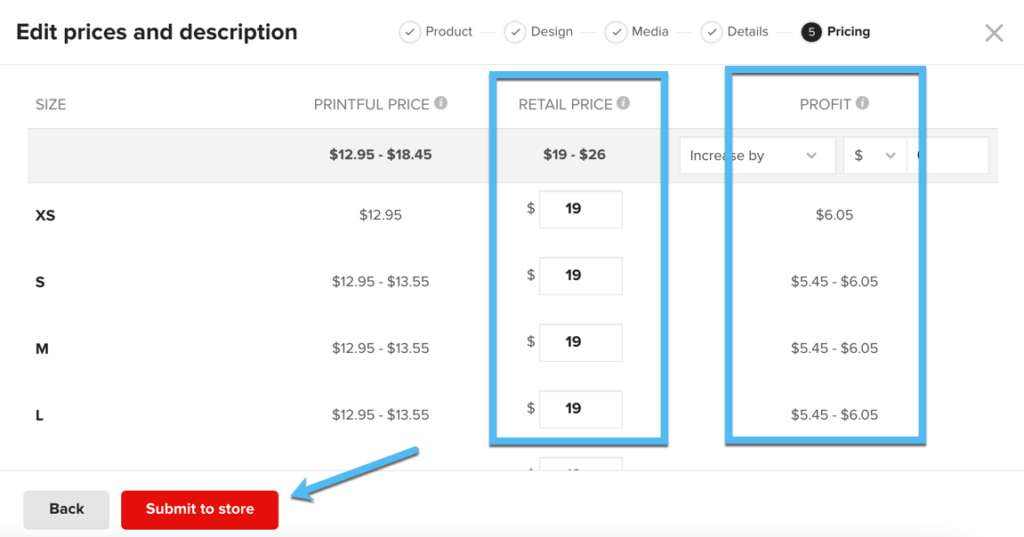
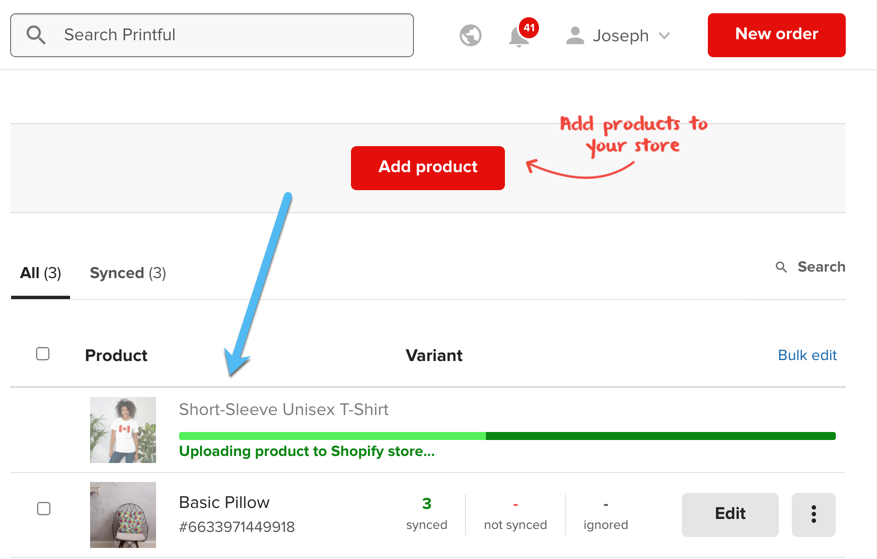


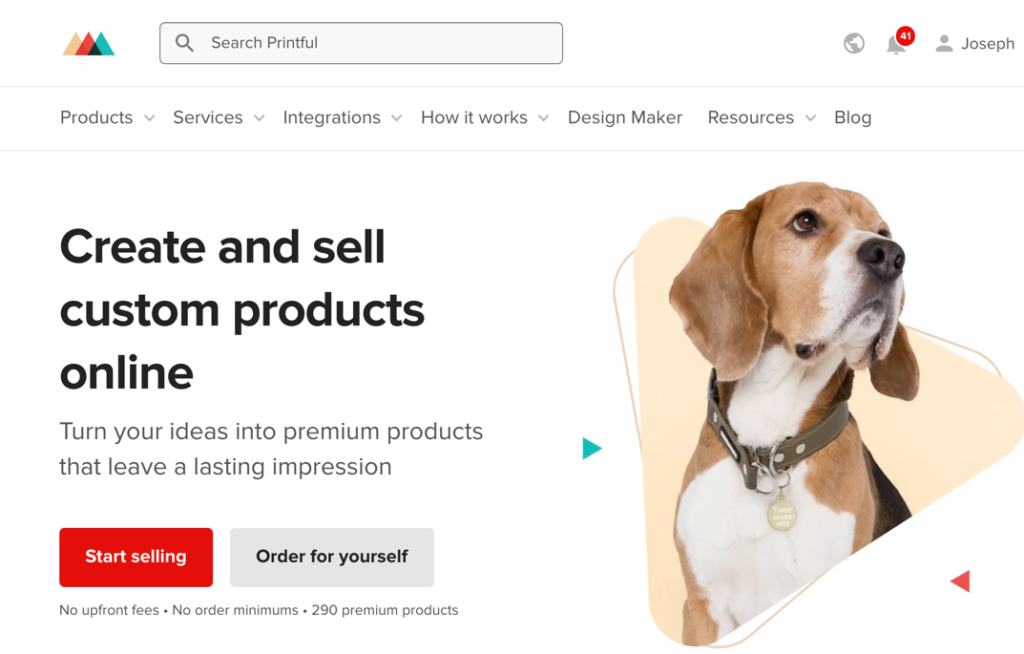
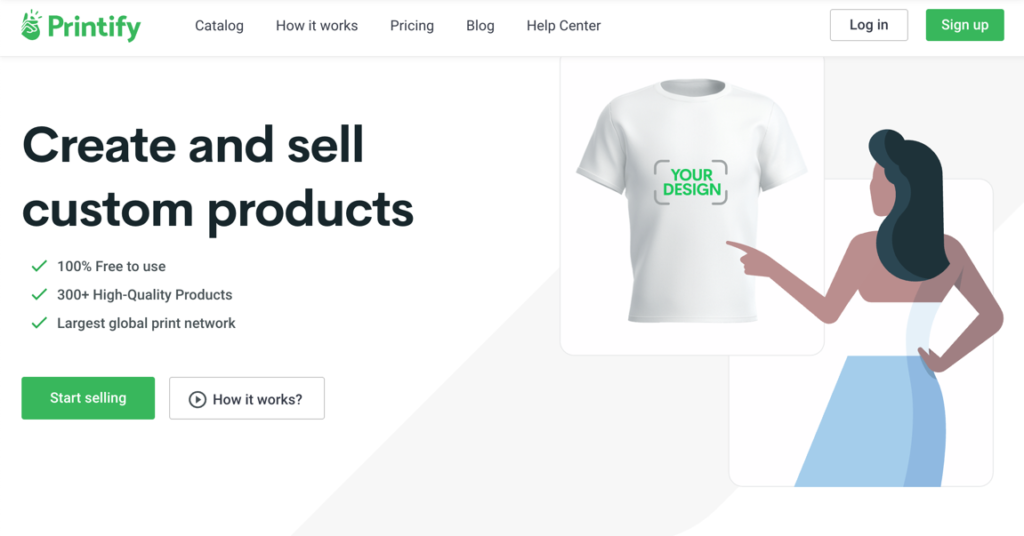
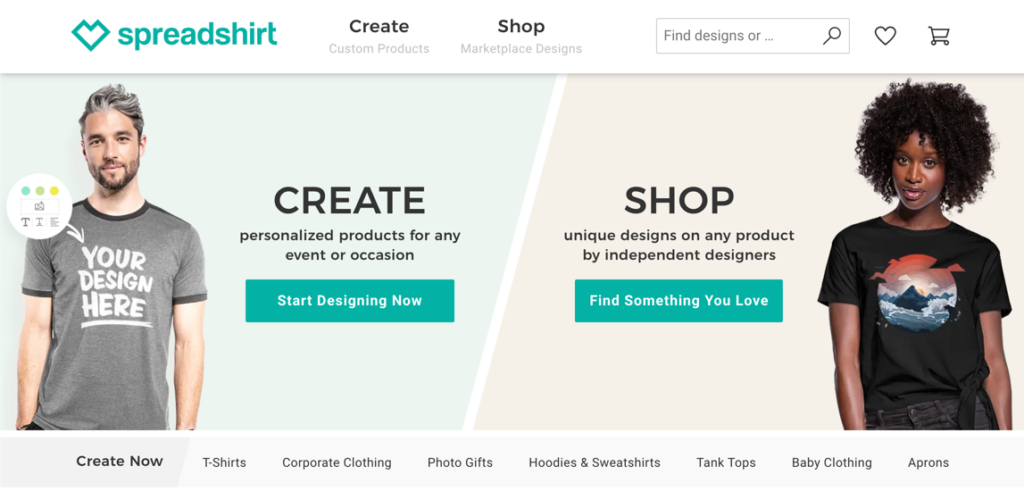

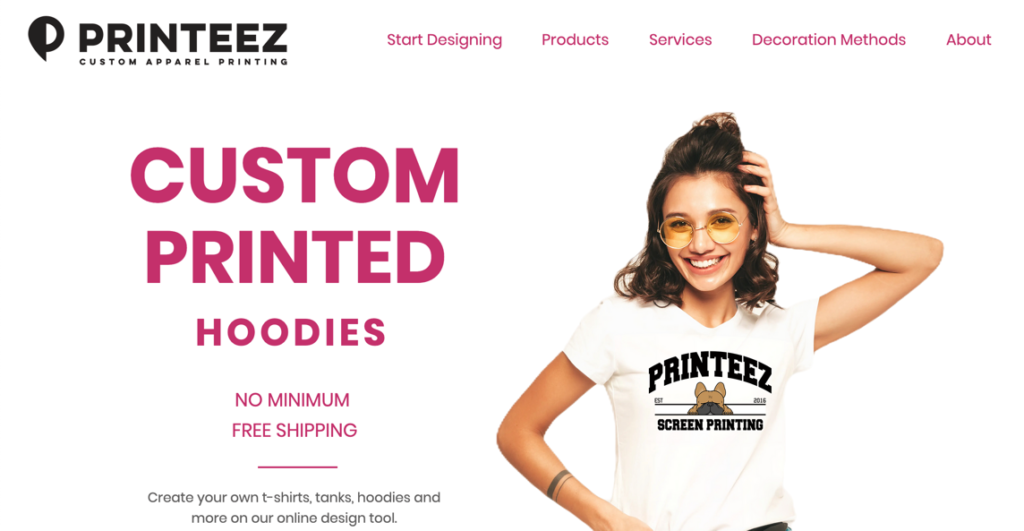
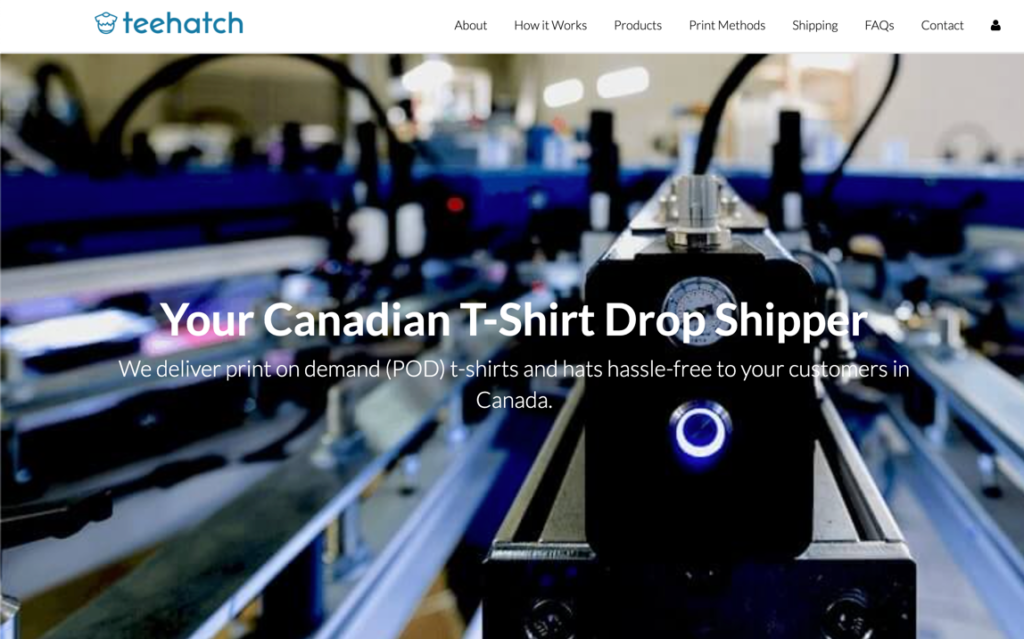


Comments 0 Responses